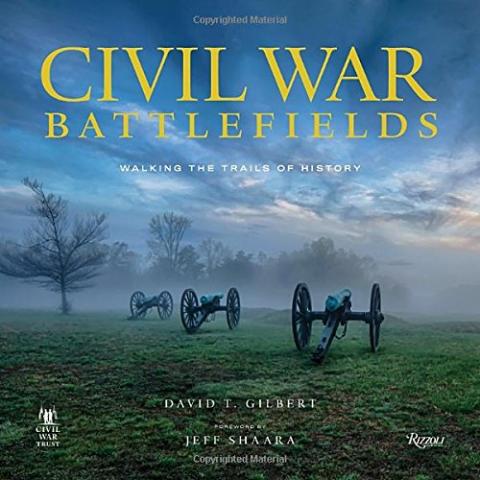Tranquil as it seemed as I ambled across the rolling meadow that gained the moniker “Bloody Angle” for one of the deadliest battles of the Civil War, the images that crept into my mind were vivid.
Though only its foundation remains today, I easily imagined Willis Landram’s cabin on the edge of the forest from which he watched as 20,000 Union troops charged en masse out of the surrounding woods and across his pastureland toward thousands of waiting Confederates.
For 22 hours, starting around dawn on May 12, 1864, and lasting early into the next day, the battle raged, at times in a drenching rain that turned the field to mud. An estimated 17,000 soldiers died, were wounded, or taken prisoner.
Walk the field today that’s protected as part of Fredericksburg and Spotsylvania National Military Park in Virginia, and you come upon several stone monuments that memorialize troops that fought at the Bloody Angle. Also a stopping point is the site where a tree 22 inches in diameter was downed by the hail of gunfire.
You can walk this hallowed ground via a path, about a mile in length, that crosses features of the landscape called the “Mule Shoe Salient” and the “Bloody Angle,” names taken both from a small “u” or “v”-shaped ridge, or salient, that the Rebel forces hoped to hold in a battle against the Union forces.
The Bloody Angle Trail that I followed is just one of dozens of “trails of history” identified in Civil War Battlefields: Walking The Trails Of History, an impressive new book by David T. Gilbert.
Traveling from the Battle of First Manassas to Appomattox Court House, stopping along the way at nearly three dozen battlefields, the author first sets the scene at each location by laying down in stirring prose the events that took place there. Then, he selects a number of trails that you can follow through these hallowed places to not just gain a feel for the lay of the land, but to practically feel how the battles progressed.
These entries are not similar to those found in hiking guidebooks, leading you almost by the hand from point to point. Rather, Mr. Gilbert in each chapter starts by setting the scene of what took place on these landscapes during the Civil War. Then, he lists the available trails by name and distance, and then takes you back in history.
“This hike explores the climatic action of the Battle of Gaines’ Mill, when Gen. John Hood’s Confederate forces finally broke through the Union line after several hours of ferocious fighting,” writes Mr. Gilbert in describing the Gaines’ Mill Breakthrough Trail that lies within Richmond National Battlefield in Virginia. “A soldier of the 4th Texas Infantry wrote, ‘Yesterday evening we was in one of the hardest fought battles ever known. I never had a clear conception of the horrors of war until last night…’
“By early evening, Confederate forces gained the crest of the ridge here, driving back troops from New York, Pennsylvania, and Michigan commanded by Gen. Daniel Butterfield. For his determined efforts Butterfield was awarded the Medal of Honor. The trail descends to Boatswain’s Creek, providing a clear view of the daunting terrain Southern troops had to negotiate to assault the commanding Union position.”
Illustrated with 230 remarkable photographs, a mix of present-day scenics and historic Civil War-era images, this hefty, 336-page hardcover book (10 inches by 10 inches) is certain to hold the attention of those interested in the war for hours.





Add comment